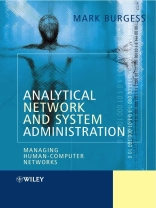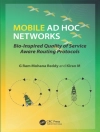Network and system administration usually refers to the
skill of keeping computers and networks running properly. But
in truth, the skill needed is that of managing
complexity. This book describes the science behind
these complex systems, independent of the actual operating systems
they work on.
It provides a theoretical approach to systems administration
that:
* saves time in performing common system administration
tasks.
* allows safe utilization of untrained and trained help in
maintaining mission-critical systems.
* allows efficient and safe centralized network
administration.
Managing Human-Computer Networks:
* Will show how to make informed analyses and decisions about
systems, how to diagnose faults and weaknesses
* Gives advice/guidance as to how to determine optimal policies
for system management
* Includes exercises that illustrate the key points of the
book
The book provides a unique approach to an old problem
and will become a classic for researchers and graduate
students in Networking and Computer Science, as well as practicing
system managers and system administrators.
Jadual kandungan
Foreword.
Preface.
1. Introduction.
2. Science and its methods.
3. Experiment and observation.
4. Simple systems.
5. Sets, states and logic.
6. Diagrammatical representations.
7. System variables.
8. Change in systems.
9. Information.
10. Stability.
11. Resource networks.
12. Task management and services.
13. System architectures.
14. System normalization.
15. System integrity.
16. Policy and maintenance.
17. Knowledge, learning and training.
18. Policy transgressions and fault modelling.
19. Decision and strategy.
20. Conclusions.
A. Some Boolean formulae.
B. Statistical and scaling properties of time-series data.
C. Percolation conditions.
Bibliography.
Index.
Mengenai Pengarang
Mark Burgess is an Associate Professor at University College in Oslo, Norway,












